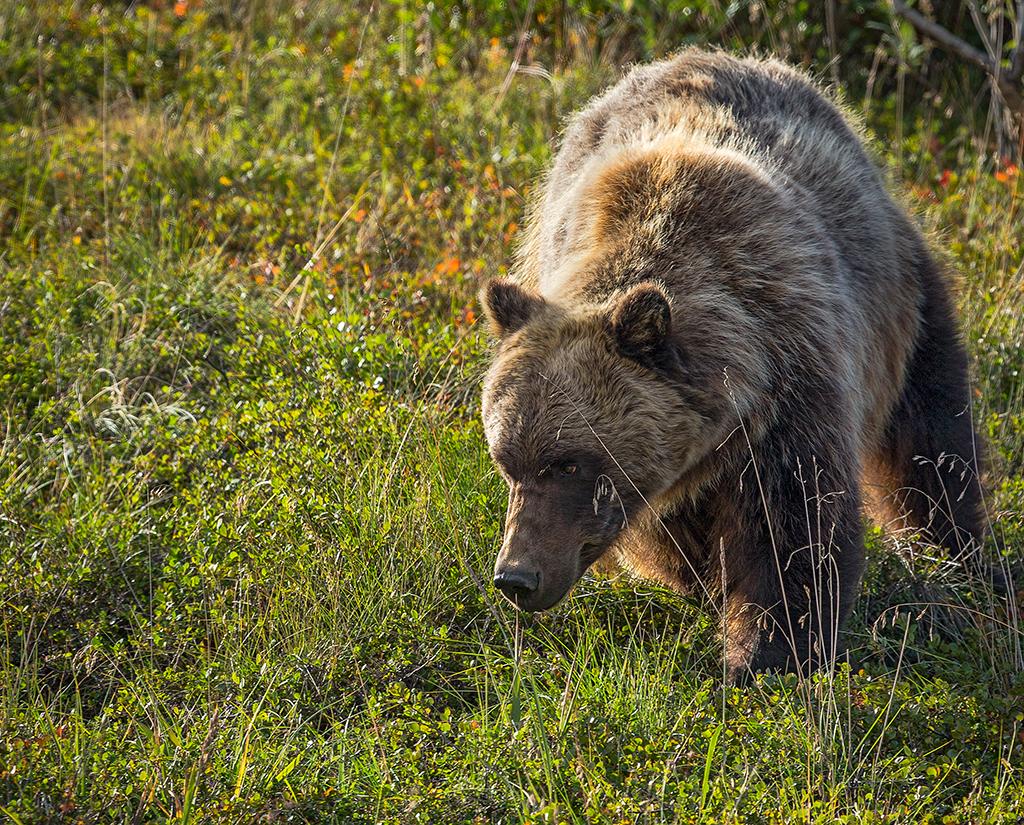Denali National Park and Preserve was the first national park created to protect wildlife. With 39 species of mammals – including the Big Five (grizzly, caribou, moose, Dall sheep, wolf) – as well as 169 species of birds and one lonely little amphibian, you are certain to spot something during your visit.

A grizzly bear sighting just off the park road, Denali National Park and Preserve / Rebecca Latson
While the chance to see one of the Big Five is a thrilling experience, probably the most interesting of the wildlife species at Denali is that single amphibian, the wood frog. Why? Because this small frog measuring no larger than three inches, end-to-end, can actually freeze solid during the winter!

The wood frog, Denali National Park and Preserve / NPS file
According to park staff:
Wood frogs are just one of many creatures that use "cryoprotectant" chemicals to survive freezing temperatures. As summer turns to fall across North America, wood frogs prepare for winter by burrowing into decaying leaves on forest floors. The eyeballs and extremities of wood frogs start to freeze as daily temperatures drop below 32° Fahrenheit (0° Celsius). The first sign of freezing apparently stimulates the brain to send a message to the wood frog’s liver, which starts to convert stored glycogen into glucose, a sugar. The glucose circulates through the frog's bloodstream into the cells where it lowers the freezing point of water. The glucose also protects cells from damage and minimizes the effects of dehydration. As the temperature continues to drop, the frogs freeze solid. Throughout the entire winter, hibernating frogs are inanimate: they don’t breathe and their hearts don’t beat. Alaskan wood frogs tolerate colder temperatures and freeze for longer periods of time than wood frogs in all other areas of North America, and can survive temperatures as low as –12° C [10° F].
Scientists have found that core organs, such as the heart and liver, freeze last and thaw first. That means vital body functions such as circulation and metabolism are maintained for the longest possible time. Once the temperatures rise in spring, the frogs thaw and they are off in search of ponds for breeding.
Ok, but what about all that other wildlife?
More than likely, you’ll see something from the window of your tour bus along the park road. You’ll be safe and so will the wildlife you see. Once you step off the bus, however, you’ll need to practice some wildlife safety.
“If not friend, why friend-shaped?” Good question. That wildlife looks pettable, but it’s really quite unpredictable and downright dangerous. Give the animals room to do their thing, carry bear spray with you, and know how to use that bear spray. You should always stay 25 yards (75 feet / 23 meters) away from those moose, foxes, and Dall sheep. Stay 300 yards (900 feet / 274 meters) away from bears. Observe the wildlife and see if it’s changing its behavior because of your presence. If that’s the case, then you are too close.
Rather than endanger yourself and the wildlife by getting too close (no selfies, please), use your camera’s telephoto lens or telephoto setting for a close-up shot or incorporate that distant wildlife into your landscape image so your viewing audience can see the environment in which that wildlife lives.
Before venturing out for any length of time in this national park and preserve, you’ll want to check out Denali’s Wildlife Safety page.





